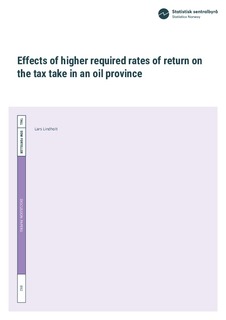Effects of higher required rates of return on the tax take in an oil province
Working paper
Permanent lenke
http://hdl.handle.net/11250/2593298Utgivelsesdato
2019-01-04Metadata
Vis full innførselSamlinger
- Discussion Papers [1002]
Sammendrag
For different reasons the oil companies might apply higher required rates of return than they did some years ago, and this will have consequences for investments and tax revenue in oil provinces.
By applying various required rates of return as well as various oil prices, this study derives future Norwegian tax revenue during 2018-2050 by using a partial equilibrium model for the global oil market. The model explicitly accounts for reserves, development and production. Both investment in new reserves and production are profit driven. With rising required rates of return less of the high cost reserves become profitable to develop and investments decline. Because the government in practice carries a large fraction of the investments, less investment in a period increases the tax base and the tax income. The initial effect is offset by a subsequent reduction in production which has a negative effect on future taxes. The result is that increasing required rates of return will lead to small variations in net present value of total tax revenue. With lower oil prices, tax take increases significantly when required rates of return rise.
